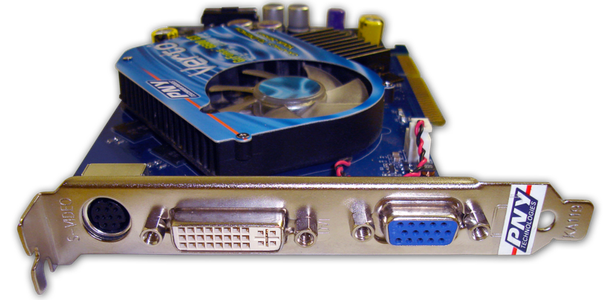Saturday, 29 December 2012
How to Test a Faulty Graphics Card
Do you like this story?

Whether you are using a legacy cathode-ray tube or a flat-screen plasma computer monitor, the graphics that you see on the screen are comprised of elements called pixels. In order to translate the information from the computer processor to the images seen by the computer user, the graphics card was developed to handle this workload. The graphics card uses the computer's motherboard for the transfer of data (incoming and outgoing) and power, an on-board microprocessor to conduct the translation of the pixel data, memory to store the information on the current and upcoming images, and a connection to plug in to the monitor for the user to see the images. Many times in today's computing environment, when a user has computer problems the issue can reside with the graphics card. The ability to conduct basic troubleshooting to determine if the source of problem is with the computer's graphics card or resides somewhere else on the computer can save the end-user time and money if they have to ask for professional assistance.
Instructions:
1:
Download and install the current motherboard chip drivers and operating
system updates. The mainstream chipset manufacturers are: AMD, ATI,
NVIDIA, ULi(ALi), SiS, and VIA. For additional information on
determining your chipset and location for downloading updated drivers
see the Chipset Information link in the references below.
2:
Download and install the most current display driver for your graphics
card from the applicable manufacturer's website. If the graphics card is
still not responding appropriately, turn off the sound system on the
computer system. Many times sound drivers can create complex problems
with gaming systems and need to be ruled out as a potential issue early
in troubleshooting.
3:
Slow the accelerated graphics port speed, which may be causing
communications issues between the graphics card and the motherboard. The
AGP speed multiplier and fast write parameters are the two common
factors to toggle at this stage of troubleshooting. Start by slowing the
speed multiplier from 8X to 4X, 2X, and finally 1X speed factors. If
none of these works, disable the fast write option. For accessing the
AGP speed controls each graphics card requires use of a different helper
application. ATI cards use the SMARTGART program, NVIDIA use CoolBits
or RivaTuner, and other cards can use the generic application PowerStrip
for modification. The applications can be downloaded from the graphics
card manufacturer's website if they are not already installed on your
computer.
4:
Remove overheating from the potential factors affecting graphics card
performance. Rig ventilation from extra house fans to the inside of the
computer enclosure. If your game or other activity that has been locking
up, takes longer to do so or doesn't fail at all, then the issue is
with the graphics card overheating and the graphics card may require
under clocking or a fix to the enclosure fan.
5:
Slow down the speed of the graphics card to reduce heat production and
reduction of power consumption. To slow the speed of the graphics card
(or underclock) by reducing the GPU clock rate and/or RAM clock rate.
ATI Graphics cards have their clock settings throttled by using ATITool,
NVIDIA cards with CoolBits or RivaTuner, and other graphics cards with
the PowerStrip application.
6:
Reseat the graphics card in the expansion slot of the motherboard and reconnect all connector cables.
7:
Test the computer power supply by swapping it with a known good one if
available. If the issue with the computer is still not resolved, seek
help from the graphics card manufacturer to determine if a new card
should be purchased.
"Dont forget to subscribe,join my site for new Games and softwares Updates,and to leave comments!"

This post was written by: Author Name
Author description goes here. Author description goes here. Follow him on Twitter
Subscribe to:
Post Comments (Atom)








0 Responses to “How to Test a Faulty Graphics Card”
Post a Comment